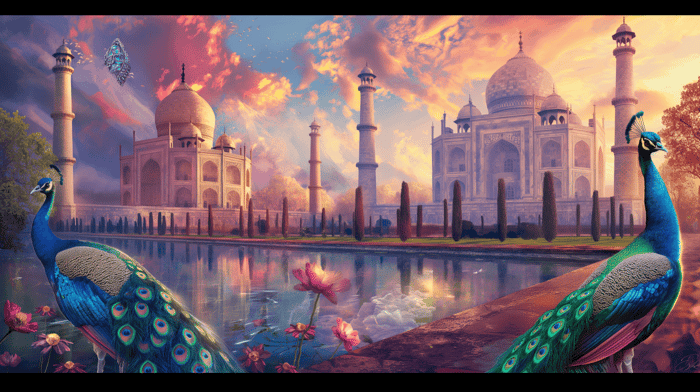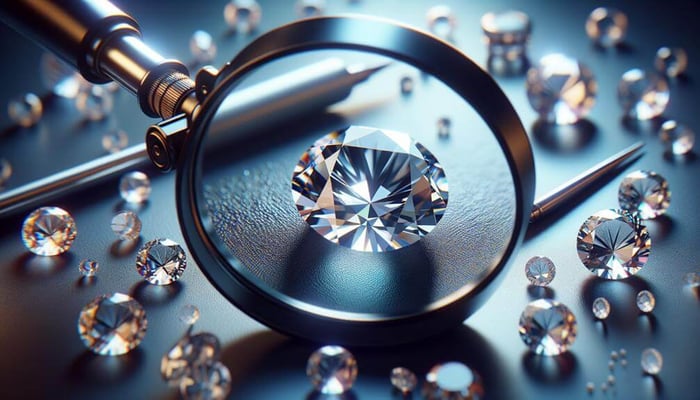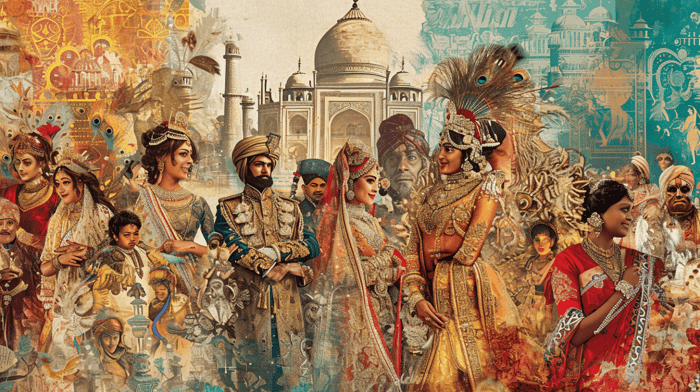The British Love of Indian Diamonds
The allure of Indian diamonds has captivated the British for centuries, with the Koh-i-Noor diamond holding a prominent place within the Crown Jewels. Its acquisition by the British Empire as a symbol of imperial conquest and plunder has sparked controversy, yet the fascination with these precious gems persists.
In this article, we will explore the intricate relationship between the British and Indian diamonds, delving into the historical significance, controversies surrounding ownership, and the enduring love affair that has shaped both nations' cultural identities. The fascinating story of British interest in Indian diamonds and the effects it has had on the field of gemology and heritage will enthrall you.
Key Takeaways About The Koh-i-Noor Diamond
- Indian diamonds symbolize British imperial power, opulence, and cultural heritage.
- British acquisition of Indian diamonds displayed wealth and dominance during the colonial era.
- The Koh-i-Noor ownership disputes highlight the need to address the colonial past and preserve Indian diamonds.
- Indian diamonds evoke pride, connection, and an enduring fascination with their colonial legacy in British culture.
Collar con solitario de diamante de 1,00 ct G/SI en oro amarillo de 18 k
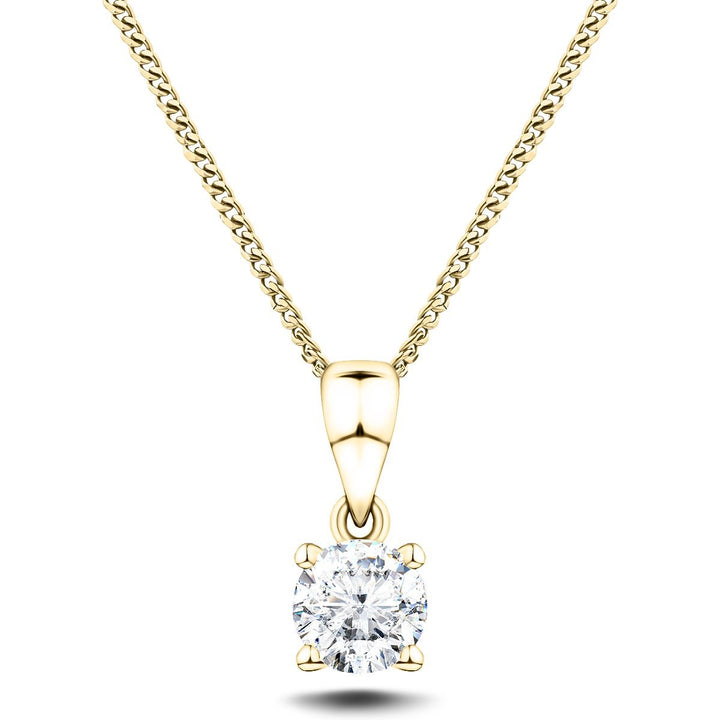
€7.304,95
Un collar elegante y atemporal que es una excelente opción para un regalo, una fiesta o simplemente para usar todos los días. Este impresionante collar de oro amarillo de 18k tiene un diseño simple pero elegante que es la elección… read more
The Historical Significance of Indian Diamonds
The historical significance of Indian diamonds, particularly the Koh-i-Noor, cannot be overstated in the context of British fascination and imperial power during the colonial era. These precious gems held symbolic power, representing the conquest and dominance of the British Empire. For the British, acquiring Indian diamonds was not just about obtaining rare treasures; it was a display of opulence and a means to showcase their wealth and power to the world.
The Koh-i-Noor diamond, with its rich history and legendary curse, captivated the British imagination. It became a prized possession, adorning the Crown Jewels at the Tower of London since 1851. This magnificent gem stands as a testament to the historical ties between Britain and India, representing the cultural heritage of both nations.
Indian diamonds played a crucial role in shaping British royal regalia. They were prominently featured in the Crown Jewels, which were not only symbols of royal authority but also a reflection of British history and culture. The Koh-i-Noor, along with other Indian diamonds, added a touch of grandeur and splendor to the opulent display of British royal treasures.
Brazalete de diamantes en engarce de tensión Diamante G/SI de 0,75 quilates en oro blanco de 18 k
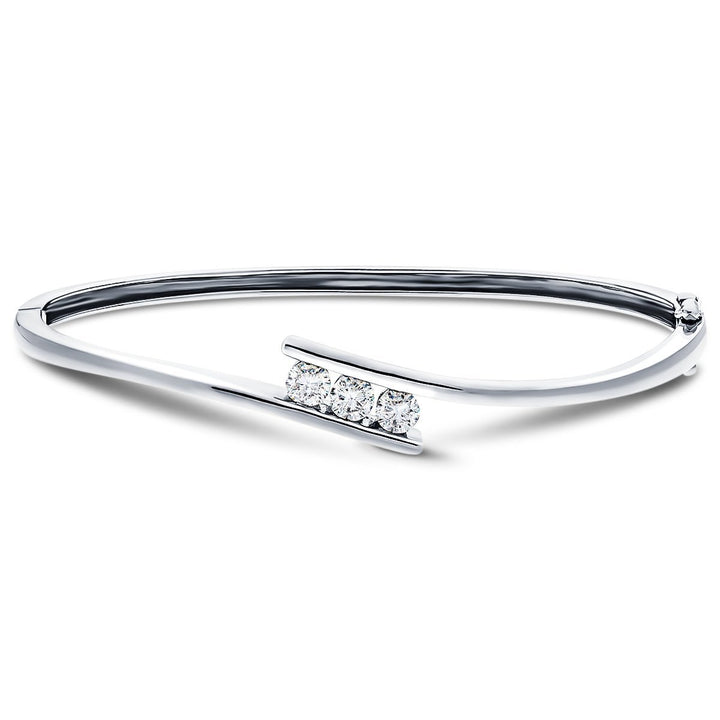
€3.795,95
Este es un brazalete de diamantes de diseño único y clásico. El diseño simple pero complejo presenta una fina banda de oro blanco de 18k. Tres brillantes diamantes de calidad G/SI de origen ético y hábilmente tallados en redondo se… read more
The British Acquisition of Indian Diamonds

The acquisition of Indian diamonds by the British during the colonial era exemplified their appetite for rare and precious treasures, elevating their opulence and imperial dominance. Indian diamonds' allure enthralled the British, who were aware of their origins as symbols of wealth and power in Indian culture. These colonial treasures, such as the famed Koh-i-Noor diamond, became prized possessions of the British Empire, representing their conquest and control over Indian territories.
Royal acquisitions of Indian diamonds were not just about material wealth; they held a deeper significance in terms of imperial symbolism. The acquisition of these precious gems served as a visible demonstration of the British Empire's dominance and authority over the Indian subcontinent. The diamonds were not only symbols of wealth but also cultural appropriation, as they were taken from their rightful owners and incorporated into the British Crown Jewels.
The British acquisition of Indian diamonds, particularly the Koh-i-Noor, continues to be a contentious issue, with debates surrounding ownership and restitution. However, regardless of the controversies, these diamonds remain emblematic of the historical ties between Britain and India. They are powerful reminders of the imperial past and serve as enduring symbols of the British love for Indian diamonds, highlighting the opulence, cultural appropriation, and imperial aspirations of the colonial era.
The Koh-i-Noor: As a Symbol of Imperial Conquest
With its storied past and controversial acquisition, the Koh-i-Noor diamond stands as a potent symbol of British imperial conquest and power. This legendary gem, weighing 105 carats, has been a centerpiece of the Crown Jewels at the Tower of London since 1851, captivating visitors with its rich history and cultural significance. As we delve into the colonial legacy surrounding the Koh-i-Noor, several key elements come to mind:
- Cultural appropriation: The diamond's journey from India to Britain represents a troubling aspect of cultural appropriation, where a precious artifact was taken from its rightful owners and incorporated into the British imperial narrative.
- Imperial symbolism: The Koh-i-Noor's presence among the Crown Jewels symbolizes the triumph of British imperialism and serves as a tangible reminder of the power and dominance of the British Empire during the colonial era.
- Historical exploitation: The acquisition of the Koh-i-Noor by the British raises questions about historical exploitation and the ways in which valuable artifacts were obtained through force and coercion.
These elements, along with ownership disputes and ongoing discussions on cultural restitution, make the Koh-i-Noor a contentious and compelling symbol of British imperial conquest and the complex relationship between Britain and India.
Despite its controversial past, the diamond continues to fascinate and ignite conversations about the legacy of colonialism and the rightful place of cultural treasures in today's world.
Channel Set Trilogy Princess Ring 0.33ct G/SI Calidad Platino

€1.201,95
Este hermoso anillo es una pieza atemporal que seguramente se convertirá en una pieza imprescindible en cualquier colección de joyería. Elaborada con platino de alta calidad, esta pieza clásica es el complemento perfecto para cualquier atuendo. Tiene un estilo atemporal… read more
Controversies Surrounding the Ownership of Indian Diamonds
The long-standing debate over the ownership of Indian diamonds, such as the Koh-i-Noor, continues to stir diplomatic tensions and ignite discussions on historical restitution. Ownership disputes surrounding these gems are deeply rooted in the complex web of colonial legacies and historical agreements. For instance, the British Empire stole the Koh-i-Noor diamond from India, sparking ongoing discussions about who should be the rightful owner.
Countries like India, Pakistan, and Afghanistan have all made claims over the Koh-i-Noor and other Indian diamonds. However, establishing the original owner is a challenge due to various historical events and conflicting narratives. Countries like India and Pakistan have made attempts to get these cultural heritage treasures back, but the UK has rejected these claims on the basis of prior agreements.
These controversies surrounding the ownership of Indian diamonds have created diplomatic challenges between nations, as the cultural significance and historical value of these gems are deeply intertwined with their acquisition by the British. The debates highlight the complexities of restitution and the need to address the colonial past.
Despite the controversies, the allure of Indian diamonds in British culture remains strong. The fascination with these gems is not only rooted in their beauty but also in their rich history and the stories they carry. The ongoing discussions surrounding ownership continue to shape the narrative around Indian diamonds and their place in British heritage.
The Enduring Fascination With Indian Diamonds in British Culture
Indian diamonds have long held a captivating allure in British culture, symbolizing wealth, power, and the legacy of colonial conquest. These precious gemstones have become embedded in the cultural symbolism of the nation, serving as a testament to its prestigious heritage. The enduring fascination with Indian diamonds in British culture can be seen through the royal admiration they have garnered over centuries. British monarchs, such as Queen Victoria and Queen Elizabeth II, have cherished and prominently displayed these gemstones in their crown jewels, showcasing their appreciation for their beauty and historical significance.
The gemstone allure of Indian diamonds goes beyond their aesthetic appeal. They represent a colonial legacy, reminding the British people of their historical ties with India and the wealth acquired through imperial conquest. The journey of diamonds like the Koh-i-Noor from India to Britain reflects this historical fascination and appreciation for these gemstones, further fueling the enduring fascination with Indian diamonds in British culture.
The cultural significance of Indian diamonds has shaped perceptions of luxury, prestige, and heritage in the UK. Their presence in the Crown Jewels at the Tower of London, as well as in other prominent British collections, continues to captivate and inspire awe. These diamonds serve as a tangible link to the past, connecting the present generation with the grandeur and opulence associated with British history. Their enduring fascination in British culture highlights the timeless allure of Indian diamonds and their ability to evoke a sense of belonging and cultural pride.
Exclusivo anillo de compromiso de diamantes con halo de oro amarillo de 18 k de 0,95 ct G/SI
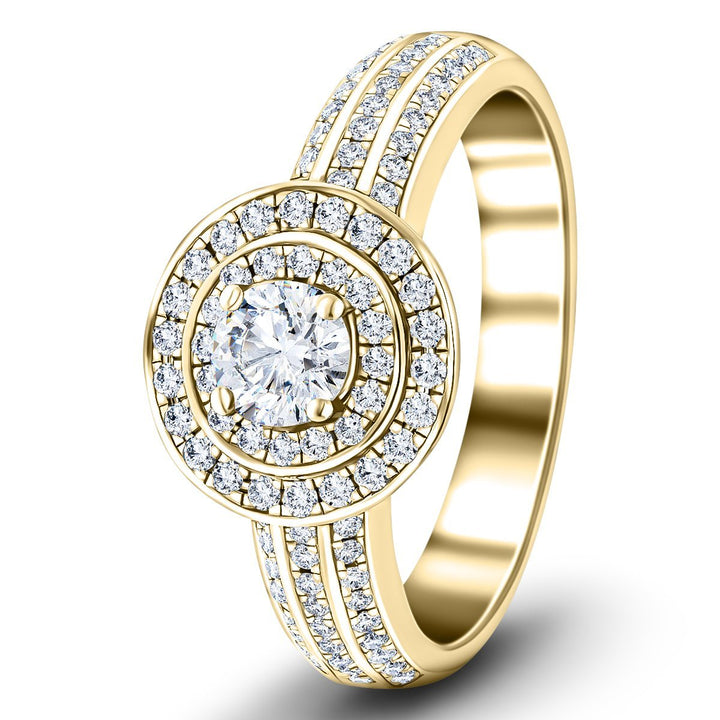
€3.007,95
Un hermoso y elegante anillo de compromiso, este impresionante anillo de compromiso de diamantes será el complemento perfecto para la colección de joyas de cualquier mujer. Una pieza exquisita y única, está elaborada en oro amarillo de 18 kilates, trabajada… read more
Frequently Asked Questions About Britain and Indian Diamonds
Did the British Take Diamonds From India?
Yes, the British took diamonds from India during the colonial era. This act of colonial exploitation and cultural appropriation had significant historical significance, impacting the global diamond trade and the economies of both nations involved.
Who Gifted the Koh-I-Noor to Britain?
Maharaja Duleep Singh, the last ruler of the Punjab, gifted the Koh-i-Noor diamond to Queen Victoria during British colonization. This act symbolized the transfer of power and authority, and the diamond's ownership has since been a subject of controversies due to its cultural significance and historical diamond trade.
Who Does the Koh-I-Noor Actually Belong To?
The ownership dispute over the Koh-i-Noor diamond continues to be a contentious issue, with multiple nations and groups making claims. Its historical and cultural significance, coupled with international law and ongoing restitution efforts, contribute to the complex nature of its rightful ownership.
Why Is the Koh-I-Noor Diamond Not Returned to India?
The Koh-i-Noor diamond has not been returned to India due to its historical significance, cultural implications, legal ownership disputes, international diplomacy, and ongoing repatriation debates. Its retention by the British represents a complex and contentious issue.
Collar de cadena con diamantes redondos 3,20 ct G/SI Oro amarillo de 18 k 30"
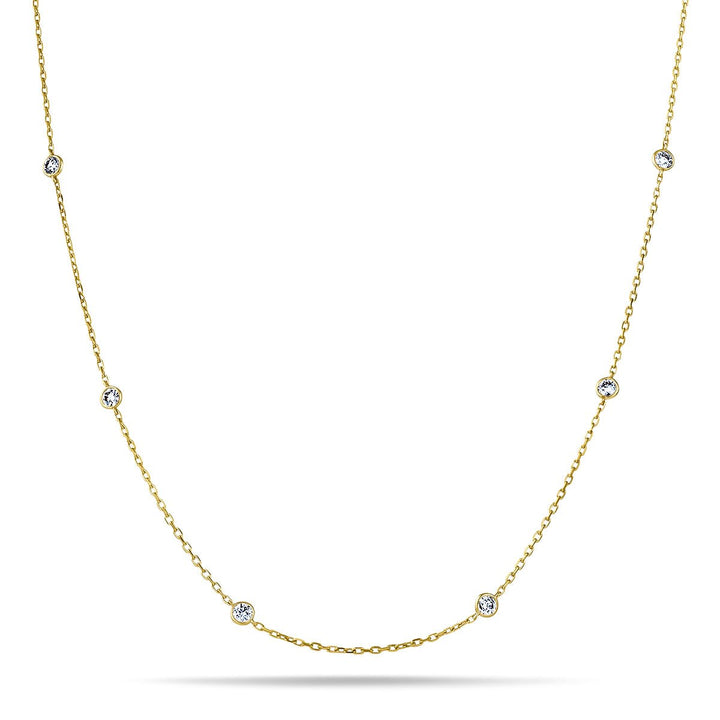
€7.165,95
Aquí hay un tremendo y llamativo collar de cadena de diamantes redondos. Este es un regalo perfecto para todas las ocasiones. Es una excelente pieza para cualquier colección de joyería. El collar de diamantes cuenta con 16 diamantes redondos de… read more
Conclusion
The British fascination with Indian diamonds, particularly the Koh-i-Noor, is a testament to the deep-rooted historical ties between Britain and India. Despite the controversies surrounding its acquisition and ownership, the allure of these diamonds endures in British culture.
Interestingly, it is estimated that India was once the world's largest producer of diamonds, accounting for nearly 80% of global diamond production in the 18th century. This statistic highlights the significant role that Indian diamonds have played in shaping both nations' cultural identities.
Of course, we can never own a diamond like the Koh-i-Noor, but most of us enjoy owning and wearing our own pieces of history in the form of diamond jewellery. At All Diamond, we enjoy helping people choose and own their own pieces of diamond jewellery. We help thousands of people create memories of special times in their lives. We would be proud to be part of your own journey into history!
Please take a few moments to browse our collection of fine diamond jewellery. We hope that our British designers and artisans can inspire the choice of your next piece of fine diamond jewellery!
Further Reading About the Koh-i-Noor Diamond
1: Why the British Won't Return the Koh-i-Noor diamond to India
2: Multiple claims to the Koh-i-Noor diamond
3: Why Britain claims the Koh-i-Noor diamond was not stolen
